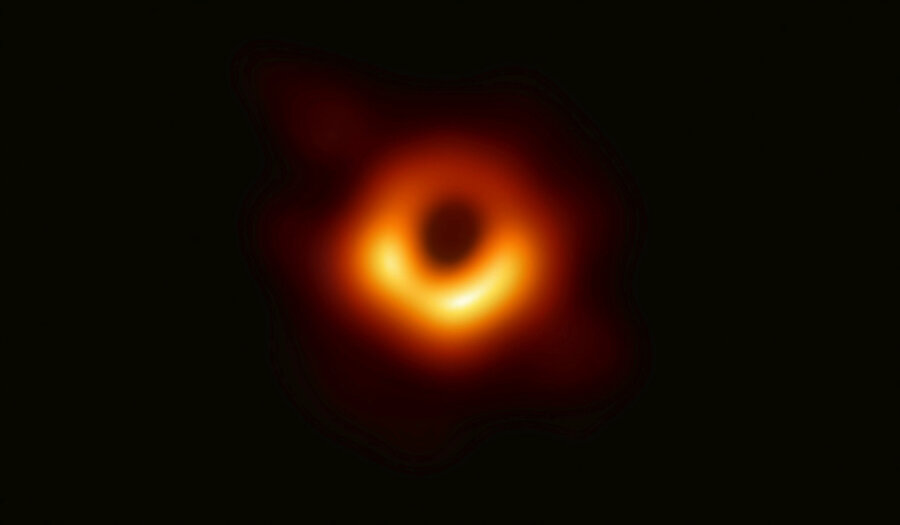A light of understanding into black holes
Loading...
It may look like only a fiery doughnut. Or perhaps the Great Eye of Sauron, the foreboding nucleus of J.R.R. Tolkien’s fantasy classic “Lord of the Rings.” But for the first time, humans have finally seen what was once merely predicted: a black hole.
A picture of one – or, more accurately, the bright swirling glow surrounding the phenomenon, which itself absorbs light near it – was revealed this week. It was taken in 2017 using eight telescopes sited around the world that together acted as one giant telescope peering into the center of a distant galaxy.
Scientists and other thinkers have long speculated that black holes are real and observable. More recently indirect evidence showed the existence of these impossibly large and mysterious aspects of the known universe. Until now, no way had been discovered to take a look: Scientists compared the task to looking up from Earth and trying to spot an orange on the moon.
“We have seen what we thought was unseeable,” says Shep Doeleman, an astronomer at the Harvard-Smithsonian Center for Astrophysics, who headed the project. The image will now join that of “Earthrise,” taken in 1968 from the moon, as an iconic image that marks a new chapter in the understanding of space.
The success in capturing this illusive image represents a tremendous accomplishment for scientific curiosity, insight, and cooperation. Many people contributed but among the noteworthy was a young woman, Katie Bouman, who was a graduate student in computer science and led the creation of an algorithm that helped capture the image.
The announcement came almost exactly a century after Sir Arthur Eddington used observations of a solar eclipse to show that light bends around dense objects, just as Albert Einstein’s general theory of relativity predicted. The image of the edges of a black hole, known as the event horizon, also seems to confirm Einstein’s calculations.
As is often the case in science, the image will lead to more questions. Bigger mysteries remain: How were black holes formed? What is it like inside one? What happens to light and matter sucked into these collapsed remnants of former stars? Black holes also distort time in ways that people not named Stephen Hawking find hard to comprehend. Ancient assumptions that the universe operates in a linear or clockwork way are bent out of shape.
Black holes “raise some of the most complex questions about the nature of space and time, and ultimately of our existence,” says Ziri Younsi of University College London, who worked on the project.
And that’s why they are worth studying. The next impossible task will be to peek inside these vast objects to reveal more answers – and ask the difficult questions about the nature of matter, time, and space. Never before has the finite hinted so strongly at the infinite.







